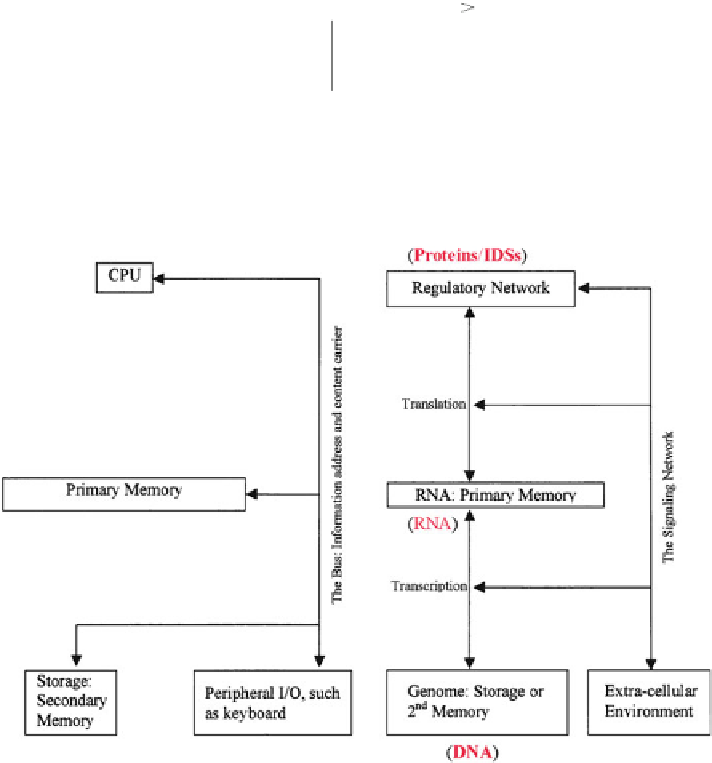Biology Reference
In-Depth Information
IDSs
IDSs
DNA
RNA
Proteins
IDSs
IDSs
Ribonucleotides
Amino acids
Fig. 11.12 A simplified representation of the Bhopalator model of the living cell, highlighting the
relationship among the key structural components - DNA, RNA, proteins, and IDSs, and the last
including biochemical concentration gradients
Fig. 11.13 A comparison between the Wang-Gribskov model (
left
) of the cell and the Bhopalator
(
right
). The main difference is the concept of IDSs which is absent in the former model of the cell.
See text for more details
whereas the concentrations of RNA molecules, both large such as mRNA and small
such as siRNA (small interfering RNA), can change dramatically while cells carry
out their functions in interaction with their environment throughout the cell cycle.
There is one important difference between the Wang-Gribskov model of the cell
shown on the right-hand side of Fig.
11.11
and the Bhopalator model of the cell
shown in Figs.
2.11
and
11.13
. In the former, what corresponds to CPU of the
computer is “regulatory network” and proteins (Wang and Gribskov 2005), whereas
what corresponds to CPU in the Bhopalator model is the combination of proteins
and IDSs, the final form of gene expression. One of the most interesting points of





